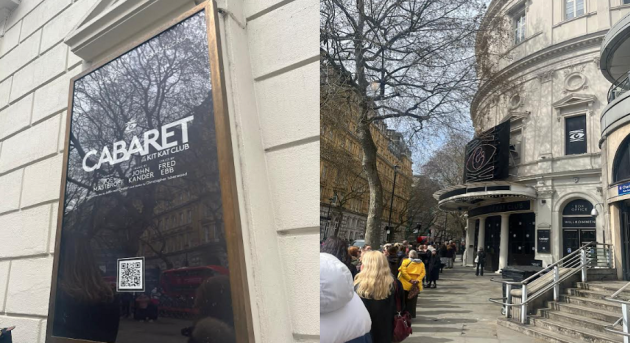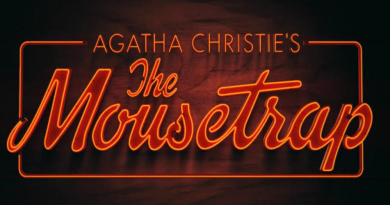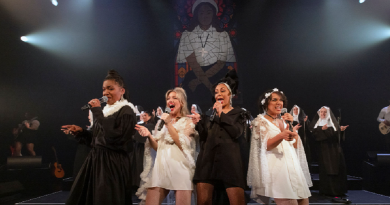Life really is a cabaret
Next month, cabaret-loving Aussies will have the opportunity to get their fix of a world ‘where anything can happen’: Launceston’s Earl Arts Centre will undergo a transformation into a late-night bohemian venue, as part of the Australian Musical Theatre Festival.
Meanwhile, back in the UK, the chance to take in a midweek matinee of Cabaret’s current incarnation at the West End’s Playhouse – spectacularly converted into the infamous Kit Kat Club – was not to be sniffed at. The story of Cabaret has been well-documented – and revived – since John Kander and Fred Ebb’s musical first appeared on Broadway in 1966. The show has its genesis in Christopher Isherwood’s 1939 semi-autobiographical novel Goodbye to Berlin.
Isherwood arrived in Berlin in 1929, seduced by its magnetic appeal to society’s ‘misfits’, including its renowned gay scene. Over time, however, the palette of Berlin changed: from the kaleidoscopic individuality of the decadent cabaret scene, the conformity of National Socialism crept in, like the proverbial frog boiled in cold water.
In the bewitching Kit Kat Club, patrons were ‘fast asleep’ while the Nazis realised their dreams and seized power. This critique of complacency and apathy en masse could not be more pointed – one of numerous reasons why Cabaret is as topical today as it was in Weimar era Germany.
So how does director Rebecca Frecknall’s immensely popular version, set to finish its run on 27 May, present this rather chilling – if fascinating – cautionary tale? Well, the immersion begins immediately on entering the theatre. An air of seductive intrigue surrounds the process of being spirited indoors through a side entrance. This is undoubtedly an ‘experience’, with a prologue that lasts from setting foot in the ‘club’ to the raising of the imaginary curtain.
The entire building becomes the womb that is the Kit Kat Club. Even descending the narrow neon-lit staircase, complimentary cognac in hand, conjures up the atmospherics of having stepped into a subterranean world. Audience members access a fringed velvet space, where undulating performers slink and musicians drape over instruments. The labyrinthine staircases then lead theatregoers up to the Klimt-style Gold Bar, or the absinthe- inspired ambience of the Green Bar.
The message is clear:
“Willkommen! And bienvenue! Welcome! Im cabaret, au cabaret, to cabaret!
In the auditorium, gone is the original Victorian proscenium stage – in its place is an intimate ‘in the round’ revolving stage, surrounded by circular two-person café tables with lamps. The impact is voyeuristic and confidential, but perhaps also foreshadows the mass surveillance associated with post- World War II East Germany, adding an uncomfortably prescient edge to the sensory escapism.
The whole scenario enables the audience to experience something of the sanctuary that the nightclub represented. Grim realities are left firmly outside the confines of this dreamlike arena. So, with the spirit of the Weimar nightclub successfully channelled, the audience is suitably warmed up for the main event.
And the main event itself calls for little by way of props, with seasoned performances doing the majority of the heavy lifting.
Yet the costumes (courtesy of theatre designer Tom Scutt) speak volumes about Germany’s descent into political darkness, not least through the mutating Master of Ceremonies (played here by a convincing John McCrea). At first colourful and frivolous (Sally Bowles’ mint-green faux fur coat is unforgettable), the clothing becomes increasingly sinister in its uniformity: the drab greys, browns and khakis of Nazism dominate.
The theme of burgeoning Nazism is largely played out through two central relationships. The first is that between the queer American writer, Cliff Bradshaw, and the tragically optimistic cabaret performer, Sally Bowles. Cliff and Sally are able to be who they want to be in the Kit Kat Club, free from society’s judgements of ‘deviants’.
But while Sally chooses to remain indifferent to the encroaching dangers of remaining in Germany, Cliff understands that there is nowhere sacred from Nazism – including the nocturnal bubble that is the Kit Kat Club. The second relationship is that between landlady Fraulein Schneider and Jewish shopkeeper Herr Schultz.
He eventually wins her round after tempting her, à la Garden of Eden, with a piece of fruit each day. Fraulein Schneider’s decision to call off their wedding is borne of survival instinct, and this domestic tragedy (quiet though it is) is a symbol of the extent of Nazi propaganda’s reach, its ability to affect the lives of ordinary German citizens. Both relationships are doomed, falling victim to a situation bigger than themselves. While Sally Bowles wilfully ignores it, Fraulein Schneider forces herself to face disturbing truths. Fraulein Schneider, at least, gives herself a fighting chance of survival, albeit by sacrificing her own happiness in the process.
Timing also plays a significant role in conveying the influence of Nazi propaganda. The first act is a lengthy one hour and forty-five minutes, the second act significantly shorter – and more ominous in tone. This tonal shift powerfully illustrates the gradual infiltration of Nazi ideology into German culture (like the aforementioned frog boiled in water) that morphs into concentrated impact. The gradual costume modifications and the asymmetrical timing judiciously highlight the narrative of systematic – and
systemic – brainwashing.
Such themes ring true for us today on so many levels. Ideologues are on the increase; those taking strong political standpoints seldom empathise with others of different persuasions. The whole gamut of public life is, seemingly, becoming more polarised by the day – the gender identity debate is just one example of the brutal intolerance (on both sides) that threatens harmonious co-existence.
Everywhere we turn, we are bombarded with received opinion that often slips into the dangerous realm of groupthink – itself a form of propaganda. And, in many parts of the world, authoritarianism is on the rise. Cabaret is a powerful reminder that we must remain vigilant and engaged in political process to ensure that our rights and freedoms are protected. Blind optimism, such as Sally Bowles’, rarely ends well.
The world may seem like a pretty divisive place right now, and perhaps we all need escapism from it occasionally – like going to see Cabaret and pretending we’re part of the Kit Kat Club oblivion for a few hours. But the wider context matters: do we hide in our warrens, as Sally does, or take a more expedient path, like Fraulein Schneider? Ultimately, we can choose whether to take cover and cross fingers in out
own personal Kit Kat Club, or make good our escape.




